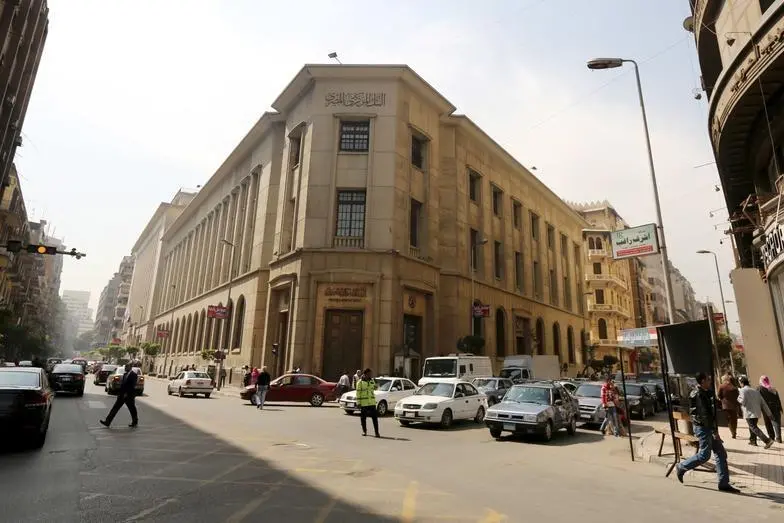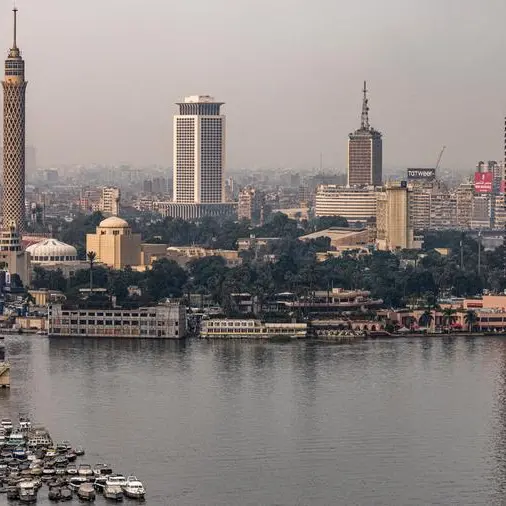PHOTO
Central Bank of Egypt's headquarters is seen in downtown Cairo, Egypt March 8, 2016. Image used for illustrative purpose. Reuters/Mohamed Abd El Ghany
Egypt - The Central Bank of Egypt (CBE) reported a $634m decline in Egypt’s external debt during the fourth quarter (4Q) of the fiscal year 2022/23, reaching $164.7bn in June 2023, as compared to $165.361bn in 3Q 2023.
In its monthly report released on Wednesday, the Central Bank explained that the external debt increased by $9bn during the fiscal year 2022/23, reflecting a growth rate of 5.8% compared to 2021/22. This increase was due to heightened net borrowing from loans and facilities, amounting to approximately $8.9bn, and the upward movement of most borrowed currencies against the dollar, totalling about $147.9bn.
The central bank confirmed that the ratio of the external debt balance to GDP stood at approximately 40.3% in June 2023, indicating that this ratio complies with the safe limits defined by international standards.
It pointed out that the burden of external debt service decreased to about $25.4bn during the fiscal year 2022/2023, down from $26.3bn in 2021/2022. This reduction was driven by a decrease in instalments paid, totalling around $18.4bn, and an increase in interest payments, amounting to approximately $7bn.
The central bank revealed that it made interest and instalment payments of external debts totalling $25.5bn during the fiscal year 2022/2023, specifically from July 2022 to June 2023.
It clarified that the debt service burdens were distributed as follows: $4.784bn in the first quarter of 2022/2023, $7.154bn in the second quarter, $5.835bn in the third quarter, and $7.644bn in the fourth quarter.
The amount of installments paid during the respective quarters was: $3.229bn, $5.843bn, $3.734bn, and $5.646bn. As for the interest payments, they were $1.555bn, $1.311bn, $2.101bn, and $1.997bn in the first, second, third, and fourth quarters, respectively.
The report also provided a breakdown of the external debt by creditor category and maturity structure. It showed that long-term debts accounted for 88% of the total external debt balance in June 2023, reaching $144.8bn. The remaining 12% was attributed to short-term debts, amounting to $19.9bn.
The largest share of long-term debts was held by multilateral institutions, such as the World Bank and the International Monetary Fund (IMF), which represented 38% of the total long-term debts or $54.8bn. The second largest share was held by bilateral creditors, such as China and Saudi Arabia, which accounted for 32% of the total long-term debts or $46.6bn. The third largest share was held by international bonds, which constituted 16% of the total long-term debts or $23.6bn. The remaining 14% was held by other creditors, such as banks and suppliers.
The report also highlighted that Egypt’s net international reserves increased by $6.6bn during the fiscal year 2022/23, reaching $51.9bn in June 2023. This level of reserves covers about 10 months of Egypt’s merchandise imports. The report attributed this increase to several factors, such as the improvement of tourism revenues, remittances from Egyptians abroad, foreign direct investments, and portfolio inflows.
The report concluded that Egypt’s external position remains resilient despite the challenges posed by the COVID-19 pandemic and its impact on global trade and financial markets. It added that Egypt’s external debt indicators are within acceptable levels and reflect its ability to meet its external obligations.
© 2022 Daily News Egypt. Provided by SyndiGate Media Inc. (Syndigate.info).


















